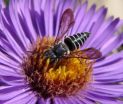(Press-News.org) In this News Digest:
Summary of a study being published online March 4, 2013 in the Journal of Clinical Oncology, reporting that in certain children with retinoblastoma, adjuvant chemotherapy can be avoided, without risking disease worsening or relapse.
The findings will help decision-making about adjuvant treatment and therapy selection for patients with low- , intermediate-, and high-risk retinoblastoma affecting only one eye
Quote for attribution to ZoAnn Eckert Dreyer, MD, American Society of Clinical Oncology Cancer Communications Committee member and pediatric cancers expert
Links to additional resources on Cancer.Net, ASCO's cancer information Website
New results from a prospective clinical trial conducted in France show that children with low-risk retinoblastoma do not need postoperative (adjuvant) chemotherapy to prevent disease recurrence or metastasis; the results also suggest that certain patients with intermediate-risk disease can receive less aggressive adjuvant treatment, or perhaps forego it altogether. Avoiding chemotherapy spares patients from treatment side effects and long-term health risks, such as cardiovascular disease and development of a second cancer.
Retinoblastoma is a rare form of cancer, accounting for three percent of all cancers diagnosed in children under the age of 15. An estimated 300 cases of retinoblastoma will be diagnosed in the United States this year, most before the age of five years. The tumor begins in the retina, a thin layer of nerve tissue that coats the back of the eye.
About two thirds of children with retinoblastoma have unilateral disease, meaning that only one eye is affected by the tumor. In developed countries, this type of disease is typically detected around two years of age. More than 95 percent of such patients are cured by surgical removal or the affected eyeball, with eyesight preserved in the other eye. However, some patients remain at risk of disease spreading and recurrence.
To estimate the risk of disease recurrence and metastasis, doctors examine the surgically removed eye under a microscope and classify the tumor as either low-, intermediate-, or high-risk. All patients whose tumors are considered high-risk receive intensive postoperative chemotherapy and radiation therapy. There is no general consensus, however, on the need for adjuvant therapy and the optimal treatment approach for patients in the other two risk categories. Therefore, protocols for adjuvant chemotherapy use in these patient groups have varied widely.
"Our study confirms that it is not necessary to give adjuvant treatment to many children with unilateral retinoblastoma," said lead study author Isabelle Aerts, MD, a pediatric oncologist at Institut Curie in Paris, France. "I think that our results will help establish the standard of care for such patients, reducing variations in postoperative chemotherapy protocols."
In the present study, 123 patients with unilateral, non-hereditary retinoblastoma were assigned to one of three risk groups according to previously established criteria. The median age at the time of eye removal surgery was 23 months. The 70 patients with low-risk disease received no postoperative chemotherapy; the 52 patients with intermediate-risk disease received four courses of adjuvant chemotherapy (etoposide, carboplatin, vincristine, cyclophosphamide), and the only patient with high-risk disease received six courses of high-dose adjuvant therapy (etoposide, carboplatin, thiotepa, vincristine, and cyclophosphamide).
At a median follow-up period of 71 months, all patients were alive. None of the patients experienced disease worsening, relapse, distant metastasis or secondary cancers. The adjuvant chemotherapy was safe overall. These data confirm that the specific regimens administered in this study, which are already being used around the world, are very effective and safe.
The excellent outcomes observed in this study confirm it is safe for patients with low-risk disease to go without adjuvant therapy and suggest that it may be safe to reduce the intensity of or even eliminate adjuvant chemotherapy in some patients with intermediate-risk disease, specifically those with a risk feature known as isolated choroidal invasion—spreading of tumor cells to the layer of blood vessels and connective tissue at the back of the eye. However, more research is needed to establish clinical criteria for identifying such patients. As all patients were alive at the end of the follow up period, it is not clear whether adjuvant treatment played a vital role, or if surgery would have been sufficient.
Aerts and her research team have recently launched a new study to confirm these results and also determine if treatment could be reduced in some patients in the intermediate-risk category. In this ongoing study, patients with intermediate-risk disease and isolated choroidal invasion are being treated with only two cycles of adjuvant chemotherapy.
ASCO Perspective
ZoAnn Eckert Dreyer, MD, ASCO Cancer Communications Committee member and pediatric cancers expert
"While this study does not include a novel therapy, it demonstrates that with improved, refined risk stratification, it may be possible to reduce chemotherapy in some patient groups – particularly those with intermediate-risk disease. Physicians and parents can be reassured that many children can go without aggressive chemotherapy and be spared from its long- and short-term effects. This will potentially result in a change in the standard of care for these patients."
###
Helpful Resources from Cancer.Net, ASCO's cancer information website:
Guide to Retinoblastoma
Cancer in Children
Understanding Chemotherapy
Making Decisions About Cancer Treatment
An interactive history of cancer research advances, including those in pediatric cancers, can be found at ASCO's Cancer Progress website at www.cancerprogress.net.
The Journal of Clinical Oncology is the tri-monthly peer-reviewed journal of the American Society of Clinical Oncology (ASCO), the world's leading professional society representing physicians who treat people with cancer.
ATTRIBUTION TO THE JOURNAL OF CLINICAL ONCOLOGY IS REQUESTED IN ALL NEWS COVERAGE.
Prospective study finds many children with retinoblastoma can safely forego adjuvant chemotherapy
2013-03-05
ELSE PRESS RELEASES FROM THIS DATE:
Brain adds cells in puberty to navigate adult world
2013-03-05
The brain adds new cells during puberty to help navigate the complex social world of adulthood, two Michigan State University neuroscientists report in the current issue of the Proceedings of the National Academy of Sciences.
Scientists used to think the brain cells you're born with are all you get. After studies revealed the birth of new brain cells in adults, conventional wisdom held that such growth was limited to two brain regions associated with memory and smell.
But in the past few years, researchers in MSU's neuroscience program have shown that mammalian brains ...
Early antiretroviral treatment reduces viral reservoirs in HIV-infected teens
2013-03-05
A study led by University of Massachusetts Medical School professor and immunologist Katherine Luzuriaga, MD, and Johns Hopkins Children's Center virologist Deborah Persaud, MD, highlights the long-term benefits of early antiretroviral therapy (ART) initiated in infants.
The study, presented on March 4 at the 20th annual Conference on Retroviruses and Opportunistic Infections (CROI) in Atlanta, shows that ART administered in early infancy can help curtail the formation of hard-to-treat viral sanctuaries — reservoirs of "sleeper" cells responsible for reigniting infection ...
Discovery of 'executioner' protein opens door to new options for stroke ALS, spinal cord injury
2013-03-05
Oxidative stress turns a protein that normally protects healthy cells into their executioner, according to a study released today in the Proceedings of the National Academy of Sciences journal.
Alvaro Estevez, an associate professor at the University of Central Florida's College of Medicine, led the multi-university team that made the discovery, which could eventually help scientists develop new therapies to combat a host of conditions from stroke to Lou Gehrig's disease
Researchers have long known that oxidative stress damages cells and results in neurodegeneration, ...
'OK' contact lenses work by flattening front of cornea, not the entire cornea...
2013-03-05
Philadelphia, Pa. (March 04, 2013) - A contact lens technique called overnight orthokeratology (OK) brings rapid improvement in vision for nearsighted patients. Now a new study shows that OK treatment works mainly by flattening the front of the cornea, reports a recent study, "Posterior Corneal Shape Changes in Myopic Overnight Orthokeratology", appearing in the March issue of Optometry and Vision Science, official journal of the American Academy of Optometry. The journal is published by Lippincott Williams & Wilkins, a part of Wolters Kluwer Health.
"This study appears ...
UCSB physicists make discovery in the quantum realm
2013-03-05
(Santa Barbara, Calif.) –– Physicists at UC Santa Barbara are manipulating light on superconducting chips, and forging new pathways to building the quantum devices of the future –– including super-fast and powerful quantum computers.
The science behind tomorrow's quantum computing and communications devices is being conducted today at UCSB in what some physicists consider to be one of the world's top laboratories in the study of quantum physics. A team in the lab of John Martinis, UCSB professor of physics, has made a discovery that provides new understanding in the quantum ...
60 percent loss of forest elephants in Africa confirmed
2013-03-05
NEW YORK (EMBARGOED UNTIL March 4, 2013, 5 PM U.S. Eastern Time) — African forest elephants are being poached out of existence. A study just published in the online journal PLOS ONE shows that across their range in central Africa, a staggering 62 percent of all forest elephants have been killed for their ivory over the past decade.
"The analysis confirms what conservationists have feared: the rapid trend towards extinction – potentially within the next decade – of the forest elephant," says Dr. Samantha Strindberg of the Wildlife Conservation Society (WCS), one of the ...
Functional electrical stimulation cycling promotes recovery in chronic spinal cord injury
2013-03-05
VIDEO:
In FES cycling, small electrical pulses are applied to the paralyzed muscles of an individual, stimulating the muscles to cycle on a stationary recumbent bicycle. The repetitive activity simulates movement...
Click here for more information.
(Baltimore, MD) – A new study by Kennedy Krieger Institute's International Center for Spinal Cord Injury (Epub ahead of print) finds that long-term lower extremity functional electrical stimulation (FES) cycling, as part of a rehabilitation ...
Daily-use HIV prevention approaches prove ineffective among women in NIH study
2013-03-05
Three antiretroviral-based strategies intended to prevent HIV infection among women did not prove effective in a major clinical trial in Africa. For reasons that are unclear, a majority of study participants—particularly young, single women—were unable to use their assigned approaches daily as directed, according to findings presented today by one of the study's co-leaders at the Conference on Retroviruses and Opportunistic Infections (CROI) in Atlanta.
The Vaginal and Oral Interventions to Control the Epidemic (VOICE) study, or MTN 003, was designed to evaluate the ...
Study shows mirabegron effective and well tolerated for overactive bladder
2013-03-05
New York, NY, March 4, 2013 – In a new phase III trial mirabegron, a β3-adrenoceptor agonist, given once daily for 12 weeks, reduced the frequency of incontinence episodes and number of daily urinations, and improved urgency and nocturia in adults with overactive bladder (OAB) compared to those in a placebo group. The incidence of common adverse events (hypertension, urinary tract infection, headache, nasopharyngitis) was similar in the mirabegron and placebo groups in this study. Rates of dry mouth and constipation were similar in the drug and placebo groups. The ...
New research confirms plight of bumble bees, persistence of other bees in Northeast
2013-03-05
A new study shows that although certain bumble bees are at risk, other bee species in the northeastern United States persisted across a 140-year period despite expanding human populations and changing land use. Led by Rutgers University and based extensively on historical specimens from the American Museum of Natural History and nine other bee collections, the study informs conservation efforts aimed at protecting native bee species and the important pollinator services they provide. The results are published today in Proceedings of the National Academy of Sciences.
Eighty-seven ...


